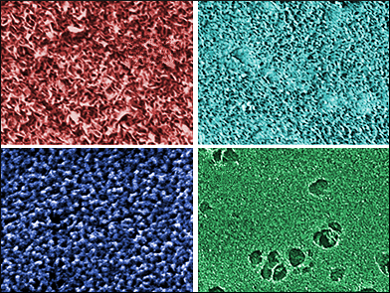Tissue engineering, i.e., growing living tissue in a lab, is one approach to help with the shortage of donor tissues and organs in medicine. The cells used for these techniques need to be grown on biocompatible scaffolds, made, for example, from hydrogels. One commonly used material for these hydrogels is alginate, a polysaccharide which easily undergoes gelation. However, alginate does not support cell attachment very well and degrades slowly.
Aldo R. Boccaccini and colleagues, University of Erlangen-Nuremberg, Germany, have combined alginate hydrogels with soy protein isolate (SPI) to improve these characteristics. The team dissolved SPI and alginate and treated the combined solution with ultrasound. This solution could then be used to produce hydrogel films in Petri dishes by adding calcium chloride solution to induce ionic gelation. Additionally, the researchers prepared hydrogel microcapsules using pneumatic extrusion.
The combined alginate/SPI material has a higher degradability than pure alginate hydrogels, which the researchers attribute to the release of the soy protein component. Additionally, cell viability on the hydrogel was tested using mouse embryotic fibroblast (MEF) cells. Compared to pure alginate films, the alginate/SPI films promoted cell viability and attachment.
According to the researchers, the developed hydrogel is promising for wound dressing applications (as films) and cell encapsulation (as microcapsules). The team is further investigating the material for its use in soft tissue engineering.
- Hydrogel films and microcapsules based on soy protein isolate combined with alginate,
Samira Tansaz, Ann-Katrin Durmann, Rainer Detsch, Aldo R. Boccaccini,
J. Appl. Polym. Sci. 2016.
DOI: 10.1002/app.44358




